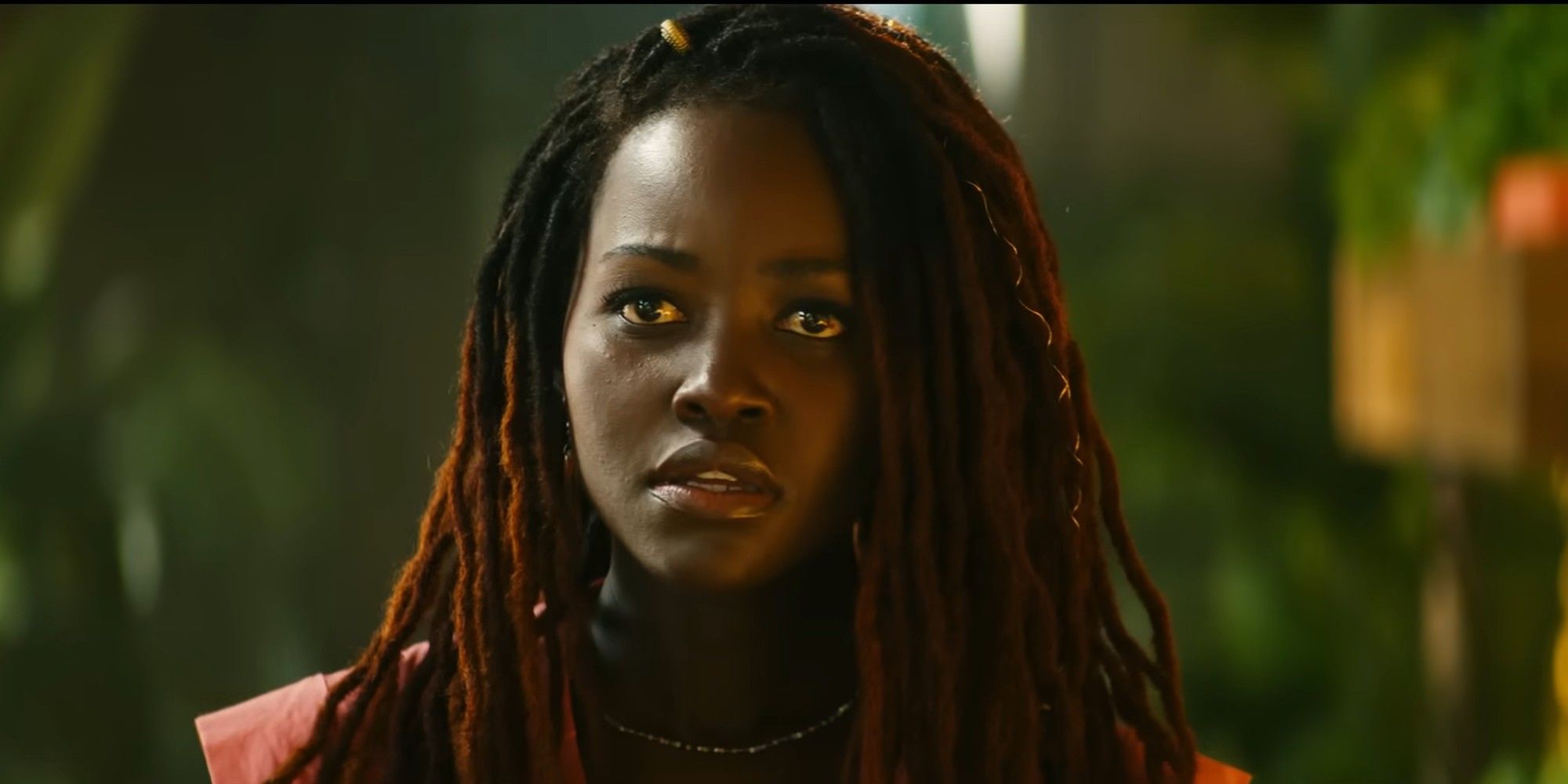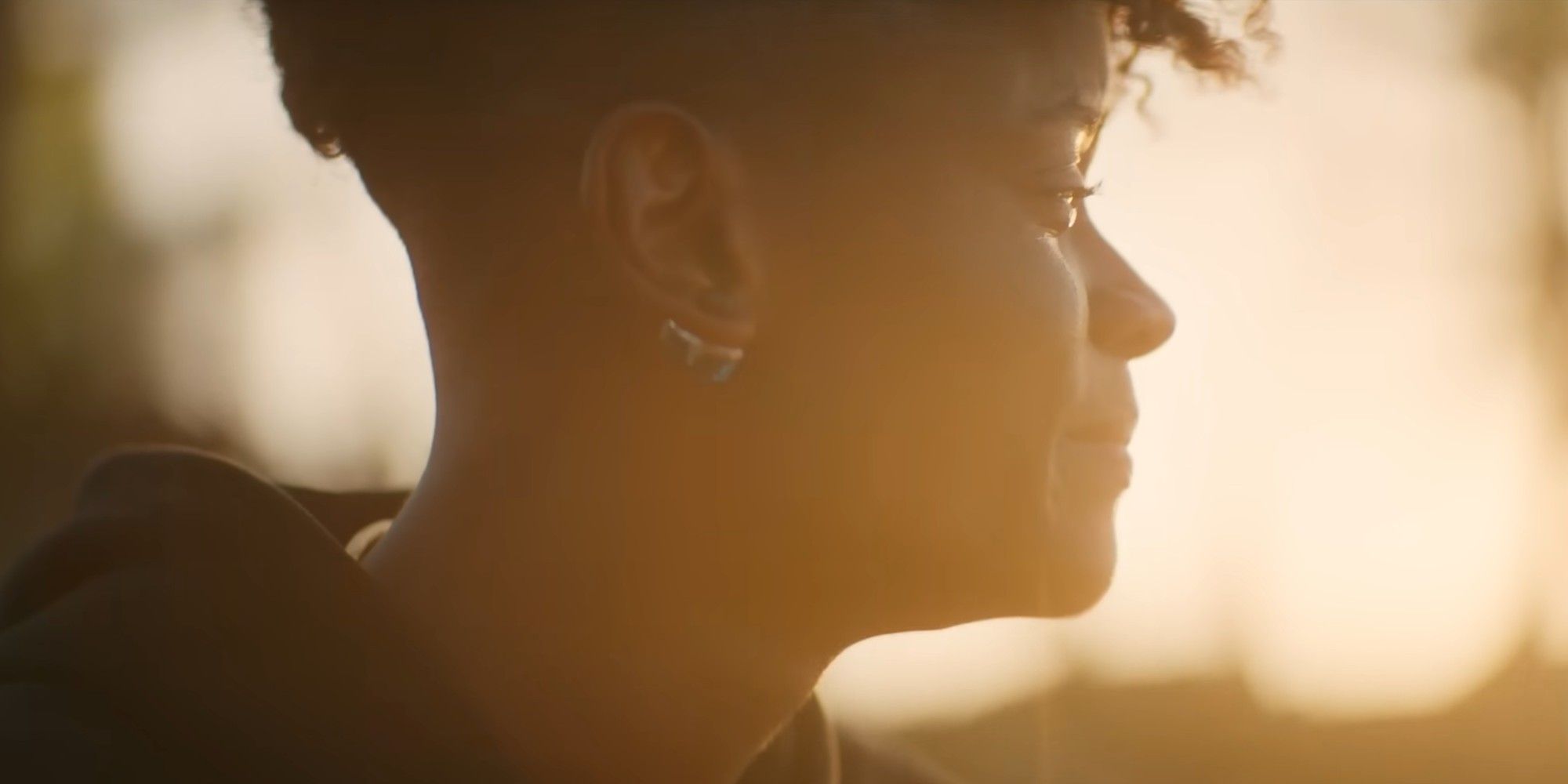This article contains spoilers for Black Panther: Wakanda Forever.
At the end of Black Panther: Wakanda Forever — after Shuri has bested Namor, and their two nations have agreed to live in peace, after the first flashy batch of stylized credits — the movie gives us the customary MCU mid-credits scene. Though the structure is familiar, director Ryan Coogler and his co-writer Joe Robert Cole take the content of the scene in a refreshingly different direction.
Shuri, having traveled to Haiti to stay with Nakia, is mourning her brother by burning her ceremonial funeral garb on the beach outside Nakia's home, when Nakia interrupts to introduce her to someone. This isn't strange. This is usually what the mid-credits scene is for: introducing the audience to a new character so they will recognize them when they show up in the franchise's future installments.
But, the person Nakia wants to introduce Shuri to isn't an established superhero or a celebrity doing a cameo. He's Nakia and T'Challa's child, Toussaint, who has been raised in secret, far from Wakanda and the royalty that would be his birthright. The mid-credits surprise is just a kid. An extremely cute kid who looks like a baby-faced version of Chadwick Boseman. But, still, just a kid.
I’ve complained before about the MCU’s mid-credits scenes sometimes being so focused on the future that they actively harm the present film. A bad recent offender was Doctor Strange in the Multiverse of Madness, which ended on a note of horror, as Stephen Strange screamed in pain and terror as a third eye appeared on his forehead. Then, after the first batch of credits, Multiverse of Madness instantly undercut that note with a mid-credits scene which depicted Strange as totally fine, having completely adjusted to life with his new eye. Charlize Theron as Clea, a recurring character from the comics, made her MCU debut, hopping out of a portal, and convincing Strange to come with her. They exit in the portal, and audiences are looking forward to the future, rather than sitting with the ending director Sam Raimi concluded the film on.
Black Panther: Wakanda Forever's mid-credits scene does something different. Instead of undercutting the ending of Wakanda Forever, the mid-credits scene feels like a continuation of the mood Coogler ended on.. It’s one of Wakanda Forever's great strengths that it feels extremely self-contained by MCU standards. It does have to do a little bit of expanded universe stuff, incorporating Julia Louis-Dreyfuss’ character, Valentina Allegra de Fontaine, who operates like a shadier version of Nick Fury in this phase of the MCU. But, for the most part, the film is focused on telling the story of the people T'Challa left behind.
The introduction of Toussaint is important to these characters, at this moment. He may end up playing a significant role in the future of the MCU, but that doesn't seem to be Coogler's goal here. Instead, Toussaint's appearance continues the themes of the preceding scene. Shuri is ritually ending her period of mourning for her brother by burning her funeral garb. Toussaint tells Shuri that his Wakandan name is the same as his father's: T'Challa. In that way, the scene functions like a coda on Shuri's mourning. She may be ending her grief, but she will carry this reminder of her brother with her going forward. Coogler wrings something human out of the kind of scene that has historically existed to feed the beast of brand awareness.
NEXT: Maybe Not All Marvel Movies Should End With A Big Fight


